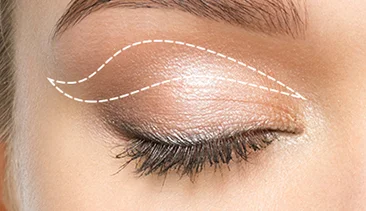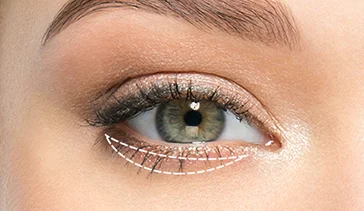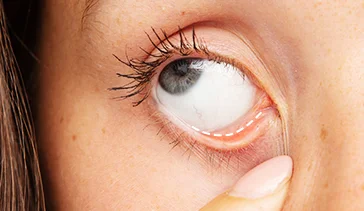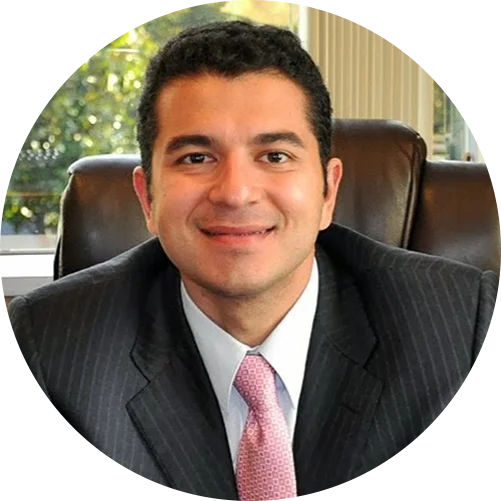What age is best to have eyelid surgery?
There is no perfect age to have blepharoplasty, but our patients are typically 35 years or older. Every person has unique factors that make them qualified for eyelid surgery, which may include the effects of the natural aging process or inherited genetics. If you think this procedure could help you achieve your cosmetic goals, please contact us to schedule a consultation. Then, we can review your medical history and evaluate your needs to determine if this procedure can benefit you.
Can blepharoplasty help dark circles or under-eye hollows?
When the lower eyelid begins to sag, it can cast a shadow, leading to dark under-eye circles. If fat in the cheek is pushing up towards the eye, Dr. Sepehr can reposition the fat and fill the under-eye area that is lacking volume. A lower eyelid procedure may be right for you if you have noticed any of these signs.
Will my insurance cover this procedure?
Most health insurance will not cover cosmetic surgery. However, when this procedure is performed to remove excess skin that is covering the eyelashes, some costs may be covered by your insurance company. This is most common if the tissue folds over the eye and is causing obstructed vision. It is best to contact your insurance company to obtain a clear understanding of what they will or will not cover.
How long should I wait until I return to work?
Many of our patients return to their jobs within 10 days of their procedure, as that is when the majority of the swelling and bruising have typically diminished. However, everyone heals at different rates, so be sure to listen to your body and to Dr. Sepehr’s recommendations in terms of when may be the best time to resume normal daily routines.
When will I see my results?
Patients can usually see improvement soon after surgery. Full blepharoplasty results are often seen several weeks or months after the procedure was initially performed. By following Dr. Sepehr’s recovery plan, swelling and bruising should gradually decrease. Throughout your recovery, our medical staff can answer any questions you may have about this process.
When can I wear contacts again?
Contact lenses should not be worn for at least 10 days after blepharoplasty, although this timespan may vary depending on the progress of your recovery. The incision site will be very delicate and susceptible to infection immediately after surgery, so it is generally best to avoid touching or disrupting the eyes as much as possible. Patients who rely on contacts should instead wear prescription glasses while making certain that the frames do not touch the eyes.
When can I wear makeup after eyelid surgery?
Like contact lenses, you should not wear makeup for at least 10 days after eyelid surgery—although it is generally safest to wait two to three weeks when incisions are fully healed. Premature makeup application can expose your eyes to harmful bacteria and other impurities, as well as disrupt your incisions from the pulling and tugging of skin. When wearing makeup does become safe again, we recommend replacing your old products with new makeup to further decrease the risk of exposing incisions to bacteria.
What will my eyes feel like after eyelid surgery?
Following blepharoplasty, your eyes will likely feel tight, sore, and/or sensitive to light. For this reason, they may need to be covered for a short time after your procedure. You may also experience blurriness or a temporary loss of some vision, both of which are normal reactions. We understand that this can be disconcerting, but your vision should be fully restored within a few days. One of our nurses will show you how to properly apply a cool compress to help alleviate swelling or soreness after surgery.
How can I reduce swelling after eyelid surgery?
While swelling is normal after eyelid surgery, the healing process can often be accelerated by keeping the head slightly elevated above heart-level whenever possible. A healthy diet consisting of healthy greens, fruits, vegetables, protein, and vitamin-rich foods can also help decrease swelling. Take care to limit consumption of salty foods and alcohol, and do not smoke after surgery until Dr. Sepehr says otherwise. It is not uncommon for swelling to last as long as six weeks after blepharoplasty, but most inflammation should subside within the first two weeks.
What is the difference between blepharoplasty and ptosis repair?
Blepharoplasty is performed to correct signs of aging, while ptosis repair is designed to treat a medical condition in which the levator muscle fails to fully lift the upper lid. The indications for upper eyelid hooding and ptosis repair often look similar and may present as a sleepy appearance, sometimes causing confusion between which procedure is the best treatment for a given condition. Dr. Sepehr can examine your anatomical indicators to conclusively determine which procedure can address your unique concerns.





